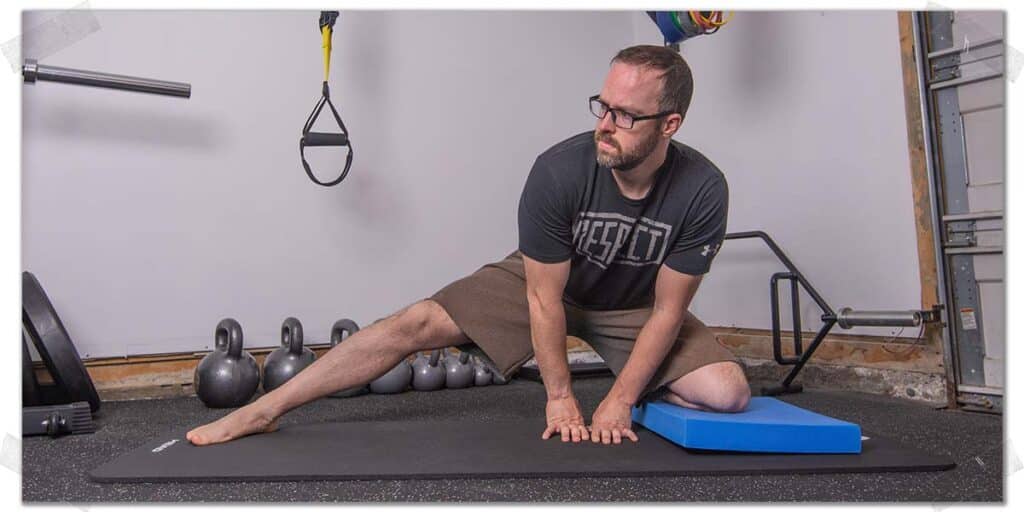A lot of good can come from working out early in the morning. From improved energy and focus throughout the rest of the day to more free time in the evening, early morning workouts can be a game changer on numerous levels. But they’re often easier said than done. Thankfully, they’re not impossible; you merely need to adopt a few strategies that will lessen the burden of waking up early and help develop and solidify this new routine.
Here’s the quick rundown on what this process looks like:
If you want to routinely wake up early for 6am workouts, you must accept that sacrifices need to be made; that strategically planning your workouts will help reduce unexpected challenges; that flexibility in training frequency can keep you on track, and that habits take time to build.
There’s SO much more that goes into this than what that preceding single sentence mentions, so if you want the unpacked, highly valuable specifics of what it will take to start crushing some early morning fitness and training sessions, keep on reading. I’ll be giving you all of my personal experiences with this topic, along with some of the science that goes behind it.
A small request: If you find this article to be helpful, or you appreciate any of the content on my site, please consider sharing it on social media and with your friends to help spread the word—it’s truly appreciated!
Acceptance: Understanding that sacrifices must be made
First thing’s first: none of this works if you can’t accept that you’ll need to make sacrifices to start consistently working out early in the morning; you can’t have your cake and eat it too. Remember, if this were easy, gyms would likely be jam-packed at 6am; this is an undertaking only for those who are disciplined. If you want to become the best athlete possible, making sacrifices is a non-negotiable. Ditto if you’re not an athlete but want to become a better version of yourself.
Sure, you can bang out a couple of morning workouts without changing your current lifestyle, but it’s highly unlikely that it will be a sustainable process. As time goes on, you’ll either find yourself dragging your butt around the gym with some lacklustre performance, or at worst, you’ll start missing your workouts altogether.
6am and other similarly-times early morning workouts are a beautiful thing in that they’re only for those who are masters with their time management and who have set their priorities accordingly. They’re often individuals with some of the clearest vision of what they’re after in life, and they know that maximizing productivity (and their health) is something to be taken seriously.
You likely won’t find many individuals who are routinely grinding away early in the mornings with their fitness training who haven’t made sacrifices as a means to do so. Some might need to make more than others, but the point is that these individuals know what their priorities are and, as such, have made the necessary sacrifices elsewhere in their lives to pursue and sustain an early morning workout regimen.
Common sacrifices that must often be made
As the saying goes, “the level of intensity dictates the level of sacrifice.” While the specific sacrifices required can look different from one early morning fitness goer to the next, there tend to be some rather universal sacrifices you’ll need to make if you’re to rise and grind at 6am on a regular basis.
Examples of some common sacrifices to be made include those that keep you up late at night or prevent you from getting deep, restful sleep. These can include:
- Late-night events and social activities
- Distractions that keep you up late (Netflix, social media, etc.)
- Stimulants that impede your overall sleep quality (consuming caffeine in the evening, alcohol, etc.)
- Free time (used to prepare for your workouts the night before)
For some individuals, certain sacrifices are easier to make than others. Using myself as an example:
I’m not much of a TV/Netflix watcher, and my time spent on social media is on the lower end than many other individuals. As such, It’s typically quite easy for me to turn in early at night (plus, I’m usually exhausted after work). I do have my vices, mind you, and as such, I am guilty of having them occasionally keep me up later than I otherwise should be if I’m to work out early the following morning.
Preemptive: Prepare everything the night before
Again, this likely sounds obvious, but plenty of people fail to do this, so it’s worth quickly going over (the following tips are where the really unique strategies will be revealed).
Assuming you want to make your morning workout routine as convenient as possible, you’ll likely want to prepare as much as possible the night before. Generally speaking, the more organized you are before heading to bed, the easier it will be to get going the following morning.
Take a moment to ask yourself what you can prepare and organize the night before your morning workout session to make your morning as efficient as possible.
This can include preparations such as:
- All meals that you plan on consuming the next day (your breakfast is all ready to be cooked/made, lunch is already packed in containers, etc.).
- Your gym bag is right by the front door, with all the necessary contents within it.
- Your morning work attire is already selected.
The idea here is that you want to not only save time in the morning, but also to remove any tasks that might feel like an impediment to your desire to go crush an early morning strength training session, fitness class, etc.
Sounds obvious, but these tactics are often underrated for simplifying morning routines and removing any subsequent time-killers that can mess with your motivation to get out the door and get to the gym.
Selection: Pick mornings that will work for you
This strategy goes hand-in-hand with the flex day strategy I discuss in the following section, so to get the most out of this current tip, you’ll want to pair it up with the flex day strategy.
Unless you’re an elite athlete with highly specific fitness or training goals that need to be achieved, you don’t need to work out or perform training sessions every single morning of the week. (Even then, for such athletes, some of their weekly workouts will be recovery-focused or very low training intensity).
As such, giving yourself the freedom to pick which days of the week you crank out your early morning workouts can go a long way.
If you know that some days simply won’t work or are more likely to be a challenge than others, steer clear of them; there’s no point in picking days that will likely lead to missed training sessions or notably poor workouts.
Related article: Gain Energy and Motivation to Exercise After Work: Here’s How
An example from my busy lifestyle
Currently, I work downtown five days a week. There are two days of the week when I start much earlier than the other three days. For those two days, my first patient is at 7:30am. Since it takes me approximately 45 minutes to commute to work, I need to leave my place by no later than 6:30am since I need a few minutes to prep for the day once I arrive at the clinic.
As such, these mornings simply don’t work for me. The other three work days, however, are much more manageable for morning activity sessions. Whether it’s going for a morning walk, a run, lifting weights, or even performing a mobility/recovery session, these mornings are much more accommodating to an activity session before I head off to work.
Being prepared: Incorporate a flex day into your training
A flex day refers to a more “flexible” day programmed into your training regimen. They’re days when you have more options for the type of training or workout you perform, how much training you perform within a session, the training intensity, or even training goals.
Pro tip: In the context of this article, you could even use a flex day regarding what time you’ll train at. You might incorporate this strategy where you aim to work out early in the morning but can still perform the workout in the afternoon or evening as a backup strategy if your morning gets derailed.
The beauty (and power) of having a flex day incorporated into your weekly training routine is the relief of pressure or dread you might otherwise feel to perform certain types of workouts when you know you just won’t be up for it (energy lacking, not feeling fully recovered from your previous workout, etc.).
This is especially beneficial if you’re prone to poor sleep (something I’m all too familiar with) and wake up in the morning feeling rather exhausted, knowing an intense workout will not go over well.
There will be times when you’ll mentally cave in and bail out of your early morning workout if you can already tell that you won’t have the energy to get through your exercises or if your body won’t be able to meet the demands.
Related content:
As such, pivoting in your morning workout will make it manageable to still get some training done without you deciding to forego your training session altogether. You may also want to consider performing trigger workouts since they can often help to overcome these types of issues.
Here are a few examples where flex days have come in extremely handy for me:
- Pivoting to a recovery-based workout (low-intensity cardio & dynamic bodyweight movements or stretches) when I didn’t sleep well the following night.
- Pivoting to an indoor (garage) workout rather than a morning workout outdoors when the weather is too lousy to perform my planned outdoor morning session.
- Pivoting to a very short but much higher intensity workout (such as a Tabata workout) when I’m running late in the morning or have less available time for my session than otherwise planned.
Regardless of why you need to pivot and modify your morning training session, the flex day will be your best friend for ensuring you can still get your morning workouts taken care of, even when factors beyond your control try to steal your morning time or energy.
Embrace the challenge: (find reward in the process)
As with any challenge worth pursuing, sticking to it is often best attained when the challenge itself is embraced and not necessarily the outcomes. What’s even better, there’s some pretty cool science to back this up!
Embracing a challenge and undergoing that challenge promotes a sense of reward, which helps strengthen our desire to stick with an otherwise challenging endeavour (such as working out bright and early). This is a phenomenon that is highlighted by Dr. Andrew Huberman, a noted neuroscientist who routinely discusses topics of neurobiology, psychiatry and behavioral sciences.
Huberman notes that the reward centres of the brain are often most significantly stimulated when an individual is able to find something rewarding about enduring a challenge or unpleasantness than the feeling of satisfaction that arises afterwards.
Related article: Getting Inspired to Exercise | Tap Into This Game-changing Mindset
In other words, he mentions that looking forward to experiencing the actual process of a challenge (and thereafter undertaking it) helps to reinforce the pathways in the brain that strengthen our desire to continue pursuing a task that we may otherwise find too unpleasant.
Remember: Behaviours and habits take time
Unless you’re already used to waking up very early, it’s best to be aware that the whole process of getting up early and then working out is going to feel unnatural and like quite an uphill battle. As such, this will take time to “groove” this new pattern into your daily or weekly life.
While there seems to be varying conclusions among researchers for how long it can take to form new habits, there seems to be one universal agreement: habits take time.
Lately, I’ve been reading a lot of research by Dr. Caroline Leaf, a clinical and cognitive neuroscientist who specializes in cognitive and metacognitive neuropsychology. According to Dr. Leaf’s research, building new habits take approximately 63 days for most individuals. While the specifics behind these findings are far, far outside the scope of this article, simply knowing that a new habit can take most individuals two months to build should help you in two distinct ways:
- It should help you to remember that waking up early to thereafter start your day with a workout will likely feel rather unnatural for the first couple of months.
- It should help reassure you that it’s ok to struggle for the first while as you make this lifestyle change and that you’ll therefore need to give yourself a bit of grace on the mornings when you just can’t seem to get yourself going.
Pro tip: Remember that you’re not merely building a new habit of rising early in the morning and working out; you’re also building the habit of going to bed earlier, prepping your needs the evening before, and other lifestyle factors all built around what’s to come in the following morning.
So, get tough on yourself when you need to ensure you stick to it but also remember that giving yourself a bit of grace during your first few months might be warranted at times as well. It can be a delicate balance between the two, but the bottom line is that this whole concept of “rise and grind” likely won’t feel natural at first. If you stick with it, it will very likely get easier as it goes, but it may take a bit of time to build the required momentum to turn this early-morning lifestyle into a habit.
Final thoughts
Waking up early and powering through morning workouts can be a powerful lifestyle pursuit that pays massive dividends. From better physical health and daily energy to more free time in the afternoon and evening, there can be some truly beautiful benefits to starting your days off with physical activity.
It’s often an uphill battle for many, but for those who remove as many barriers as possible and make the required sacrifices, the rewards are more than worth it.
Frequently asked questions
Below, you’ll find a few brief answers to some commonly asked questions individuals often have when considering performing early morning workouts.

Hi! I’m Jim Wittstrom, PT, DPT, CSCS, Pn1.
I am a physical therapist who is passionate about all things pertaining to strength & conditioning, human movement, injury prevention and rehabilitation. I created StrengthResurgence.com in order to help others become stronger and healthier. I also love helping aspiring students and therapists fulfill their dreams of becoming successful in school and within their clinical PT practice. Thanks for checking out my site!



